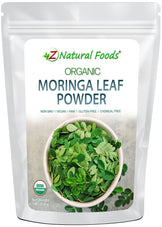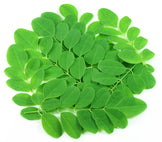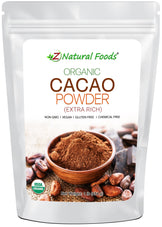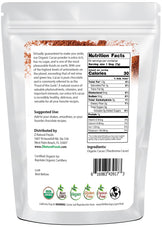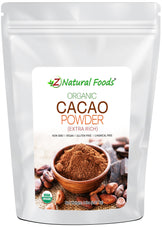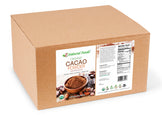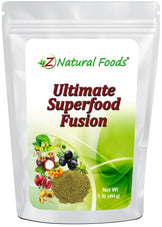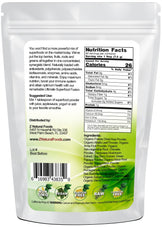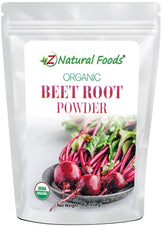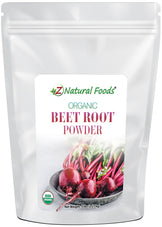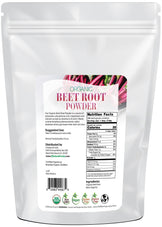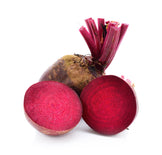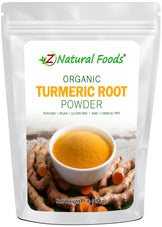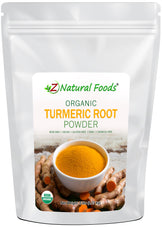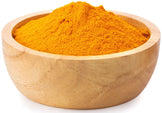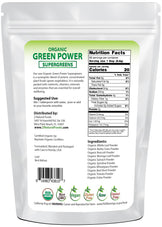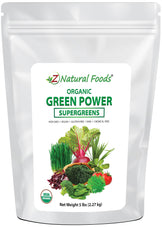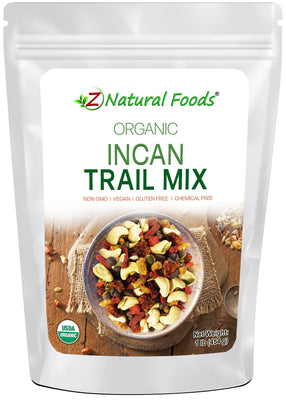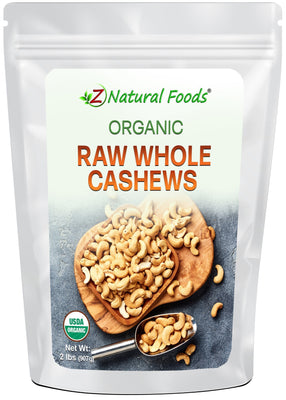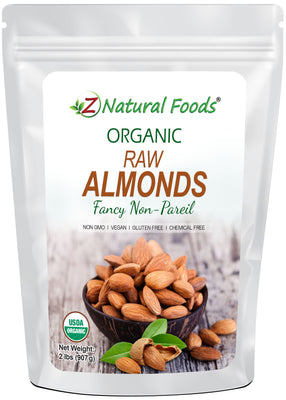About Product
Organic black chia seeds have been cultivated in Central and South America since ancient times.
They were an important food source for the Aztecs and Mayans, offering a quality source of nourishment.
In modern times, they have become popular in smoothies, cereals, and baked goods.
Due to their versatility and value, organic black chia seeds have become popular.
They are a source of omega-3 fatty acids, fiber, and various minerals, making them a good choice for daily consumption.
Organic black chia seeds are a great way to nourish and flavor your meals and snacks.
The Macro and micronutrients of Black Chia Seeds include:
-
Protein (20-30%)
-
Lipids/Fatty Acids (Omega 3 & 6, 35%)
-
Carbohydrates and fiber (25%)
-
Minerals: Calcium, Iron, Magnesium, Phosphorus, Potassium, Zinc, Copper, Manganese, Selenium
-
Vitamins: Vitamin C, Thiamin, Riboflavin, Niacin, Vitamin B12, Folate, Vitamin A (IU), Vitamin E, Alpha Tocopherol,
-
Amino Acids: Tryptophan, Threonine, Isoleucine, Leucine, Lysine, Methionine, Cystine, Phenylalanine, Tyrosine, Valine, Arginine, Histidine, Alanine, Aspartic Acid, Glutamic Acid, Proline, Serine, Glycine
-
Phytochemicals: phenolic acids, rosmarinic acid, protocatechuic ethyl ester, caffeic acid, gallic acid
Our Chia seeds are raw, non-GMO, non-irradiated, and cultivated without pesticides. Try them, and we know you’ll enjoy them.
Suggested Uses: Add one teaspoon to cereal, yogurt, and salads, or soak in chilled fruit juice to make delicious chia. It can also be mixed into flour when making bread, muffins, and other baked goods.
Miscellaneous Facts About Our Raw, Organic, Black Chia Seeds
Certifications: Certified USDA Organic.
Ingredients: Raw Black Chia Seeds.
Parts Used: Whole, Black Chia Seeds.
Botanical Name: Salvia hispanica L.Other Names: Chia Herb, Chia Sage, Indian Running Food.
Origin: Grown in Paraguay. Packaged with care in Florida, USA.
How to Maintain Optimum Freshness
- This product is packaged in airtight stand-up, resealable foil pouches for optimum freshness.
- Once opened, push the air out of the pouch before resealing it to preserve maximum potency.
- Keep your powder in a cool, dark, dry place.
This product is 100% natural and minimally processed:
Taste, smell, texture, and color vary from batch to batch. Go here to learn why our products may naturally vary.
The important protections we take to bring you safe and nutritious superfoods:
Please go here to discover the essential steps we take to deliver fresh, quality nutrition.
Bulk Quantities?
Need to order a large quantity of our products? We are happy to help! Please get in touch with our Bulk department to discuss the details.
* Product packaging, pictures, and origin may vary.
Sources & References
1. "Salvia hispanica L.". Germplasm Resources Information Network. United States Department of Agriculture. 2000-04-19. Retrieved 2012-03-21.
2. Cahill, Joseph P. (2003). "Ethnobotany of Chia, Salvia hispanica L. (Lamiaceae)". Economic Botany 57 (4): 604"“618. doi:10.1663/0013-0001(2003)057[0604:EOCSHL]2.0.CO;2.
3. Kintzios, Spiridon E. (2000). Sage: The Genus Salvia. CRC Press. p. 17. ISBN 978-90-5823-005-8.
4. Stephanie Strom (November 23, 2012). "30 Years After Chia Pets, Seeds Hit Food Aisles". New York Times. Retrieved 2012-11-26. "Whole and ground chia seeds are being added to fruit drinks, snack foods and cereals and sold on their own to be baked into cookies and sprinkled on yogurt"
5. Anderson, A.J.O. and Dibble, C.E. "An Ethnobiography of the Nahuatl", The Florentine Codex, (translation of the work by Fr. Bernardino de Sahagún), Books 10-11, from the Period 1558-1569.
6. Mark Griffiths, Editor. Index of Garden Plants. (Portland, Oregon: Timber Press, 2nd American Edition, 1995.) ISBN 0-88192-246-3.
7. USDA SR-21 Nutrient Data (2010). "Nutrition facts for dried chia seeds, one ounce". Conde Nast, Nutrition Data.
8. Chia: The Ord Valley's new super crop
9. USDA SR-21 Nutrient Data (2010). "Nutrition Facts and Analysis for Seeds, flaxseed". Conde Nast, Nutrition Data. Retrieved 2010-11-29.
10. USDA SR-21 Nutrient Data (2010). "Nutrition Facts and Analysis for Seeds, sesame seed kernels, dried (decorticated)". Conde Nast, Nutrition Data. Retrieved 2010-11-29.
11. Ulbricht C et al (2009). "Chia (Salvia hispanica): a systematic review by the natural standard research collaboration". Rev Recent Clin Trials 4 (3): 168"“74. doi:10.2174/157488709789957709. PMID 20028328.
12. The European Union, "Commission Decision of 13 October 2009 authorising the placing on the market of Chia seed(Salvia hispanica) as a novel food ingredient under Regulation (EC) No 268/97 of the European Parliament and of the Council" (L294/14) 2009/827/EC pp. 14-15 (November 11, 2009)
13. "Chewing Chia Packs A Super Punch". NPR. Retrieved 18 October 2012.
14. Albergotti, Reed. "The NFL's Top Secret Seed". Wall Street Journal. Retrieved 19 October 2012.
15. Stephanie Strom (November 23, 2012). "30 Years After Chia Pets, Seeds Hit Food Aisles". New York Times. Retrieved 2012-11-26. "significantly more alpha-linolenic acid in omega-3 reached the bloodstream and was converted into eicosapentaenoic acid, a long-chain fatty acid considered good for the heart"
16. Nieman DC, Gillitt N, Jin F, Henson DA, Kennerly K, Shanely RA, Ore B, Su M, Schwartz S (2012). "Chia seed supplementation and disease risk factors in overweight women: a metabolomics investigation". J Altern Complement Med 18 (7): 700"“8. doi:10.1089/acm.2011.0443. PMID 22830971.
17. Cahill 2003, p. 605
18. "A second apparently pre-Columbian cultivation area is known in southern Honduras and Nicaragua."Jamboonsri, Watchareewan; Phillips, Timothy D.; Geneve, Robert L.; Cahill, Joseph P.; Hildebrand, David F. (2011). "Extending the range of an ancient crop, Salvia hispanica L."”a new ω3 source". Genetic Resources and Crop Evolution (Springer). Online First. doi:10.1007/s10722-011-9673-x.
19. J. L. Bresson, A. Flynn, M. Heinonen, et al., "Opinion on the safety of "Chia seeds (Salvia hispanica L.) and ground whole Chia seeds" as a food ingredient," The European Food Safety Authority Journal, vol. 996, pp. 1"“26, 2009.
20. P. G. Peiretti and G. Meineri, "Effects on growth performance, carcass characteristics, and the fat and meat fatty acid profile of rabbits fed diets with chia (Salvia hispanica L.) seed supplements," Meat Science, vol. 80, no. 4, pp. 1116"“1121, 2008.
21. E. Reyes-Caudillo, A. Tecante, and M. A. Valdivia-López, "Dietary fibre content and antioxidant activity of phenolic compounds present in Mexican chia (Salvia hispanica L.) seeds," Food Chemistry, vol. 107, no. 2, pp. 656"“663, 2008.
22. J. P. Cahill and M. C. Provance, "Genetics of qualitative traits in domesticated chia (Salvia hispanica L.)," Journal of Heredity, vol. 93, no. 1, pp. 52"“55, 2002.
23. Reales, D. Rivera, J. A. Palazón, and C. Obón, "Numerical taxonomy study of Salvia sect. Salvia (Labiatae)," Botanical Journal of the Linnean Society, vol. 145, no. 3, pp. 353"“371, 2004.
24. W. Jamboonsri, T. D. Phillips, R. L. Geneve, J. P. Cahill, and D. F. Hildebrand, "Extending the range of an ancient crop, Salvia hispanica L."”a new ω3 source," Genetic Resources and Crop Evolution, vol. 59, no. 2, pp. 171"“178, 2012.
25. P. G. Peiretti and F. Gai, "Fatty acid and nutritive quality of chia (Salvia hispanica L.) seeds and plant during growth," Animal Feed Science and Technology, vol. 148, no. 2"“4, pp. 267"“275, 2009.
26. V. Y. Ixtaina, S. M. Nolasco, and M. C. Tomás, "Physical properties of chia (Salvia hispanica L.) seeds," Industrial Crops and Products, vol. 28, no. 3, pp. 286"“293, 2008.
27. M. Bueno, O. di Sapio, M. Barolo, H. Busilacchi, M. Quiroga, and C. Severin, "Quality tests of Salvia hispanica L. (Lamiaceae) fruits marketed in the city of Rosario (Santa Fe province, Argentina)," Boletin Latinoamericano y del Caribe de Plantas Medicinales y Aromáticas, vol. 9, no. 3, pp. 221"“227, 2010.
28. O. di Sapio, M. Bueno, H. Busilacchi, M. Quiroga, and C. Severin, "Morphoanatomical characterization of Salvia hispanica L. (LAMIACEAE) leaf, stem, fruit and seed," BoletÃn Latinoamericano Y Del Caribe De Plantas Medicinales Y Aromáticas, vol. 11, no. 3, pp. 249"“2268, 2012.
29. B. Heuer, Z. Yaniv, and I. Ravina, "Effect of late salinization of chia (Salvia hispanica), stock (Matthiola tricuspidata) and evening primrose (Oenothera biennis) on their oil content and quality," Industrial Crops and Products, vol. 15, no. 2, pp. 163"“167, 2002.
30. S. K. Jeong, H. J. Park, B. D. Park, and I. H. Kim, "Effectiveness of topical chia seed oil on pruritus of end-stage renal disease (ESRD) patients and healthy volunteers," Annals of Dermatology, vol. 22, no. 2, pp. 143"“148, 2010.
31. P. Simopoulos, "Omega-3 fatty acids in inflammation and autoimmune diseases," Journal of the American College of Nutrition, vol. 21, no. 6, pp. 495"“505, 2002.
32. H. Poudyal, S. K. Panchal, J. Waanders, L. Ward, and L. Brown, "Lipid redistribution by α-linolenic acid-rich chia seed inhibits stearoyl-CoA desaturase-1 and induces cardiac and hepatic protection in diet-induced obese rats," Journal of Nutritional Biochemistry, vol. 23, no. 2, pp. 153"“162, 2012.
33. P. Simopoulos, "The omega-6/omega-3 fatty acid ratio, genetic variation, and cardiovascular disease," Asia Pacific Journal of Clinical Nutrition, vol. 17, no. 1, pp. 131"“134, 2008.
34. M. Betti, T. I. Perez, M. J. Zuidhof, and R. A. Renema, "Omega-3-enriched broiler meat: 3. Fatty acid distribution between triacylglycerol and phospholipid classes," Poultry Science, vol. 88, no. 8, pp. 1740"“1754, 2009.
35. V. Dubois, S. Breton, M. Linder, J. Fanni, and M. Parmentier, "Fatty acid profiles of 80 vegetable oils with regard to their nutritional potential," European Journal of Lipid Science and Technology, vol. 109, no. 7, pp. 710"“732, 2007.
36. F. Jin, D. C. Nieman, W. Sha, et al., "Supplementation of milled chia seeds increases plasma ALA and EPA in postmenopausal women," Plant Foods For Human Nutrition, vol. 67, pp. 105"“110, 2010.
37. D. C. Nieman, E. J. Cayea, M. D. Austin, D. A. Henson, S. R. McAnulty, and F. Jin, "Chia seed does not promote weight loss or alter disease risk factors in overweight adults," Nutrition Research, vol. 29, no. 6, pp. 414"“418, 2009.
38. G. C. Martha, R. T. Armando, A. A. Carlos, et al., "A dietary pattern including Nopal, Chia seed, soy protein, and oat reduces serum triglycerides and glucose intolerance in patients with metabolic syndrome," Journal of Nutrition, vol. 142, no. 1, pp. 64"“69, 2012.
39. V. Vuksan, A. L. Jenkins, A. G. Dias et al., "Reduction in postprandial glucose excursion and prolongation of satiety: possible explanation of the long-term effects of whole grain Salba (Salvia hispanica L.)," European Journal of Clinical Nutrition, vol. 64, no. 4, pp. 436"“438, 2010.
40. R. Ayerza and W. Coates, "Influence of environment on growing period and yield, protein, oil and α-linolenic content of three chia (Salvia hispanica L.) selections," Industrial Crops and Products, vol. 30, no. 2, pp. 321"“324, 2009.
41. R. Ayerza h and W. Coates, "Protein content, oil content and fatty acid profiles as potential criteria to determine the origin of commercially grown chia (Salvia hispanica L.)," Industrial Crops and Products, vol. 34, no. 2, pp. 1366"“1371, 2011.
42. R. Ayerza, "Effects of seed color and growing locations on fatty acid content and composition of two chia (Salvia hispanica L.) genotypes," Journal of the American Oil Chemists' Society, vol. 87, no. 10, pp. 1161"“1165, 2010.
43. R. Ayerza (h) R., "Oil content and fatty acid composition of chia (Salvia hispanica L.) from five northwestern locations in Argentina," Journal of the American Oil Chemists' Society, vol. 72, no. 9, pp. 1079"“1081, 1995.
44. Antruejo, J. O. Azcona, P. T. Garcia, et al., "Omega-3 enriched egg production: the effect of a-linolenic x-3 fatty acid sources on laying hen performance and yolk lipid content and fatty acid composition," British Poultry Science, vol. 52, no. 6, pp. 750"“760, 2011.
45. R. Ayerza and W. Coates, "Omega-3 enriched eggs: the influence of dietary α-linolenic fatty acid source on egg production and composition," Canadian Journal of Animal Science, vol. 81, no. 3, pp. 355"“362, 2000.
46. R. Ayerza and W. Coates, "Effect of dietary α-linolenic fatty acid derived from chia when fed as ground seed, whole seed and oil on lipid content and fatty acid composition of rat plasma," Annals of Nutrition and Metabolism, vol. 51, no. 1, pp. 27"“34, 2007.
47. Fernandez, S. M. Vidueiros, R. Ayerza, W. Coates, and A. Pallaro, "Impact of chia (Salvia hispanica L.) on the immune system: preliminary study," Proceedings of the Nutrition Society, vol. 67, article E12, 2008.
48. W. Coates and R. Ayerza, "Chia (Salvia hispanica L.) seed as an n-3 fatty acid source for finishing pigs: effects on fatty acid composition and fat stability of the meat and internal fat, growth performance, and meat sensory characteristics," Journal of Animal Science, vol. 87, no. 11, pp. 3798"“3804, 2009.
49. G. Masoero, G. Sala, G. Meineri, P. Cornale, S. Tassone, and P. G. Peiretti, "Nir spectroscopy and electronic nose evaluation on live rabbits and on the meat of rabbits fed increasing levels of Chia (Salvia hispanica L.) seeds," Journal of Animal and Veterinary Advances, vol. 7, no. 11, pp. 1394"“1399, 2008.
50. Dalle Zotte and Z. Szendro, "The role of rabbit meat as functional food," Meat Science, vol. 88, no. 3, pp. 319"“331, 2011.
51. R. Ayerza, "Chia as a new source of ω-3 fatty acids: advantage over other raw materials to produce ω-3 enriched eggs," in Proceedings of the Symposium on Omega-3 Fatty Acids, Evolution and Human Health, Washington, DC, USA, September 2002.
52. R. Ayerza, W. Coates, and M. Lauria, "Chia seed (Salvia hispanica L.) as an ω-3 fatty acid source for broilers: influence on fatty acid composition, cholesterol and fat content of white and dark meats, growth performance, and sensory characteristics," Poultry Science, vol. 81, no. 6, pp. 826"“837, 2002.
53. M. S. Vedtofte, M. U. Jakobsen, L. Lauritzen, et al., "Dietary alpha linoleic acid, linoleic acid and n-3 long-chain PUFA and risk of ischemic heart disease," The American Journal of Clinical Nutrition., vol. 94, pp. 1097"“1103, 2011.
54. V. Y. Ixtaina, S. M. Nolasco, and M. C. Tomà s, "Oxidative Stability of Chia (Salvia hispanica L.) Seed Oil: effect of Antioxidants and Storage Conditions," Journal of the American Oil Chemists' Society, vol. 89, pp. 1077"“1090, 2012.
55. M. I. Capitani, V. Spotorno, S. M. Nolasco, and M. C. Tomás, "Physicochemical and functional characterization of by-products from chia (Salvia hispanica L.) seeds of Argentina," LWT"”Food Science and Technology, vol. 45, no. 1, pp. 94"“102, 2012.
56. V. Y. Ixtaina, F. Mattea, D. A. Cardarelli, M. A. Mattea, S. M. Nolasco, and M. C. Tomás, "Supercritical carbon dioxide extraction and characterization of Argentinean chia seed oil," Journal of the American Oil Chemists' Society, vol. 88, no. 2, pp. 289"“298, 2011. View at Publisher "¢ View at Google Scholar "¢ View at ScopusI.A. R. Uribe, J. I. N. Perez, H. C. Kauil, G. R. Rubio, and C. G. Alcocer, "Extraction of oil from chia seeds with supercritical CO2," Journal of Supercritical Fluids, vol. 56, no. 2, pp. 174"“178, 2011.
57. V. Y. Ixtaina, A. Vega, S. M. Nolasco et al., "Supercritical carbon dioxide extraction of oil from Mexican chia seed (Salvia hispanica L.): characterization and process optimization," Journal of Supercritical Fluids, vol. 55, no. 1, pp. 192"“199, 2010.
58. R. Rendón-Villalobos, A. Ortiz-Sanchez, J. Solorza-Feria, and C. A. Trujillo-Hernandez, "Formulation, physicochemical, nutritional and sensorial evaluation of corn tortillas supplemented with chia seed (Salvia hispanica L.)," Czech Journal of Food Sciences, vol. 30, no. 2, pp. 118"“125, 2012.
59. W. F. Baughman and G. S. Jamieson, "Chia seed oil," Oil & Fat Industries, vol. 6, no. 9, pp. 15"“17, 1929.
60. The Chia Company, "Request for scientific evaluation of substantial equivalence application for the approval of Chia seeds (Salvia hispanicaL.) from the Chia Company for use in bread," Food Law Consultants, 2010, http://www.food.gov.uk/multimedia/pdfs/thechiacompany.pdf.
61. R. Borneo, A. Aguirre, and A. E. León, "Chia (Salvia hispanica L) gel can be used as egg or oil replacer in cake formulations," Journal of the American Dietetic Association, vol. 110, no. 6, pp. 946"“949, 2010.
62. R. Ayerza and W. Coates, "An ω-3 fatty acid enriched chia diet: influence on egg fatty acid composition, cholesterol and oil content," Canadian Journal of Animal Science, vol. 79, no. 1, pp. 53"“58, 1999.
63. R. Ayerza and W. Coates, "Dietary levels of chia: influence on yolk cholesterol, lipid content and fatty acid composition for two strains of hens," Poultry Science, vol. 79, no. 5, pp. 724"“739, 2000.
64. R. Ayerza and W. Coates, "Dietary levels of chia: influence on hen weight, egg production and sensory quality, for two strains of hens," British Poultry Science, vol. 43, no. 2, pp. 283"“290, 2002.
65. G. Meineri and P. G. Peiretti, "Apparent digestibility of mixed feed with increasing levels of chia (Salvia hispanica L.) seeds in rabbit diets," Italian Journal of Animal Science, vol. 6, no. 1, pp. 778"“780, 2007.
66. G. Meineri, P. Cornale, S. Tassone, and P. G. Peiretti, "Effects of chia (Salvia hispanica L.) seed supplementation on rabbit meat quality, oxidative stability and sensory traits," Italian Journal of Animal Science, vol. 9, no. 10, pp. 45"“49, 2009.
67. B. L. Olivos-Lugo, M. Ã. Valdivia-López, and A. Tecante, "Thermal and physicochemical properties and nutritional value of the protein fraction of mexican chia seed (Salvia hispanica L.)," Food Science and Technology International, vol. 16, no. 1, pp. 89"“96, 2010.
68. T. G. Illian, J. C. Casey, and P. A. Bishop, "Omega 3 chia seed loading as a means of carbohydrate loading," Journal of Strength and Conditioning Research, vol. 25, no. 1, pp. 61"“65, 2011.
69. D. Lema, "Growth and productivity in Argentine agriculture," in Conference on Causes and Consequences of Global Agricultural Productivity Growth, Washington, DC, USA, May 2010, http://www.farmfoundation.org/news/articlefiles/1725-Lema.pdf.
70. R. Ayerza and W. Coates, "Seed yield, oil content and fatty acid composition of three botanical sources of ω-3 fatty acid planted in the Yungas ecosystem of tropical Argentina," Tropical Science, vol. 47, no. 4, pp. 183"“187, 2007.
71. W. Coates and R. Ayerza, "Production potential of chia in northwestern Argentina," Industrial Crops and Products, vol. 5, no. 3, pp. 229"“233, 1996.
72. http://ndb.nal.usda.gov/ndb/foods
73. http://www.ncbi.nlm.nih.gov/pubmed/24811150
* Reviews & Success Stories Disclaimer
Product reviews solely reflect the views and opinions expressed by the contributors and not those of Z Natural Foods. Z Natural Foods does not verify or endorse any claims made in these reviews. Statements have not been evaluated by the FDA and are not intended to diagnose, treat, cure, or prevent any disease or health condition.REFERRAL PROGRAM
Share your personal link to your friends and welcome them with rewards. Claim yours when they make their first purchase.

GIVE
$10 off discount

GET
$10 off discount
Other products in the same category
Incan Trail Mix - Organic
$14.99
Almonds - Raw Organic
$24.99

































